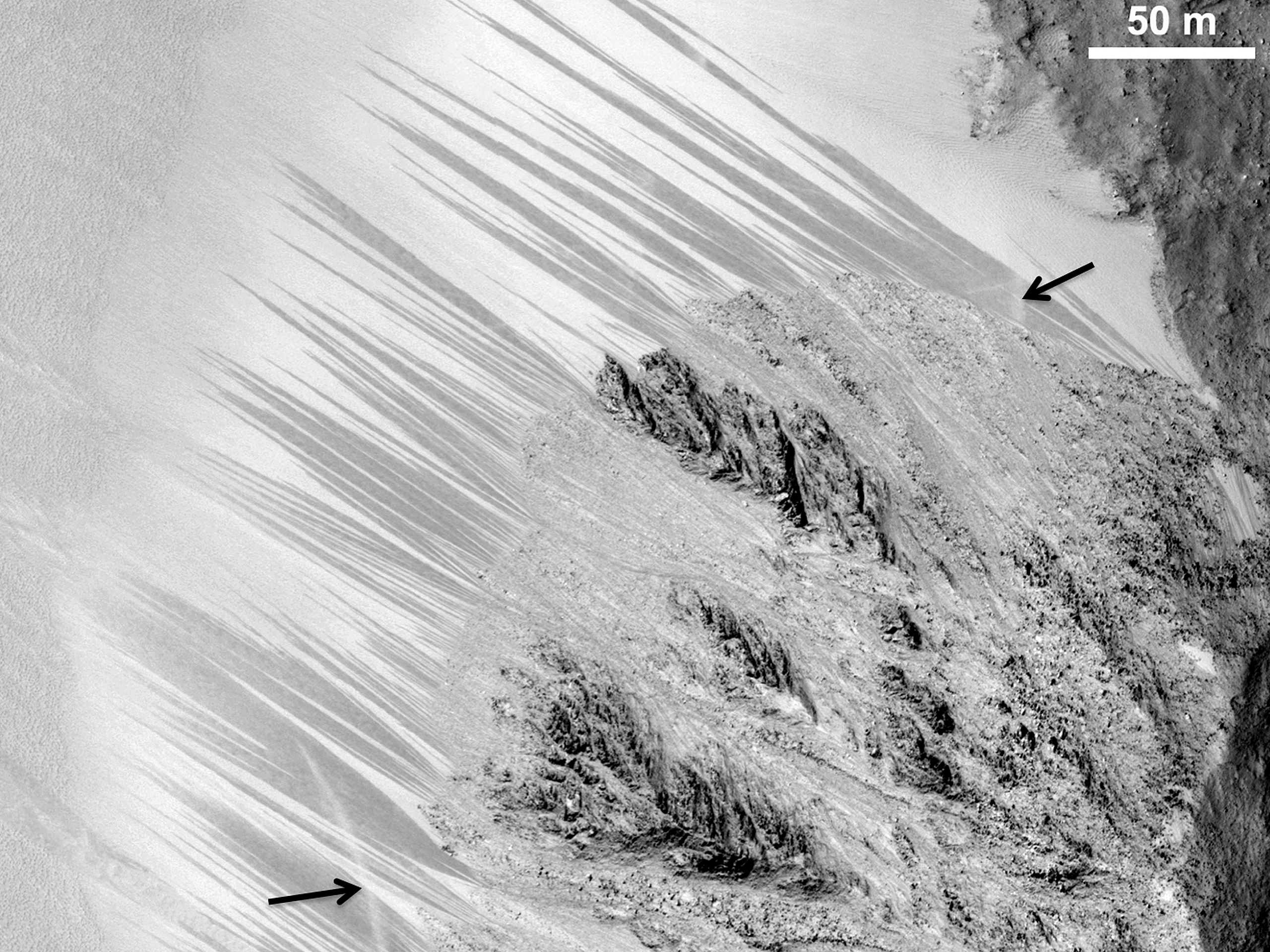This image (
see cutout) features large candidate recurring slope lineae (RSL), which some have considered evidence for seeping water. They are “candidate” RSL because we have not seen them change over time in ways that definitely identify them as RSL
Recent research has favored dry models for RSL formation, in which the darkening is due to removal of bright dust. There are often dark dust devil tracks associated with RSL sites, supporting this interpretation. At this site, however, we see bright dust devil tracks where they cross the RSL. The dust devil tracks are the diffuse streaks that cross the topography at various angles, not following the downhill direction. How can dust devil tracks be bright from dust removal or redistribution while RSL are dark from dust removal?
The answer may be that the grain size and roughness of the surface is changing. Small grains and smoother surfaces tend to be brighter than coarser-grained or rougher surfaces. Bright dust devil tracks are seen elsewhere on Mars, and one example on Earth in which the passing dust devil produces a smoother surface. Downhill is to the upper left of this cutout image, and the dark RSL flow directly down the slope gradient.
ID:
ESP_062917_1640date: 28 December 2019
altitude: 265 km
https://uahirise.org/hipod/ESP_062917_1640
NASA/JPL-Caltech/University of Arizona
#Mars #science #NASA
